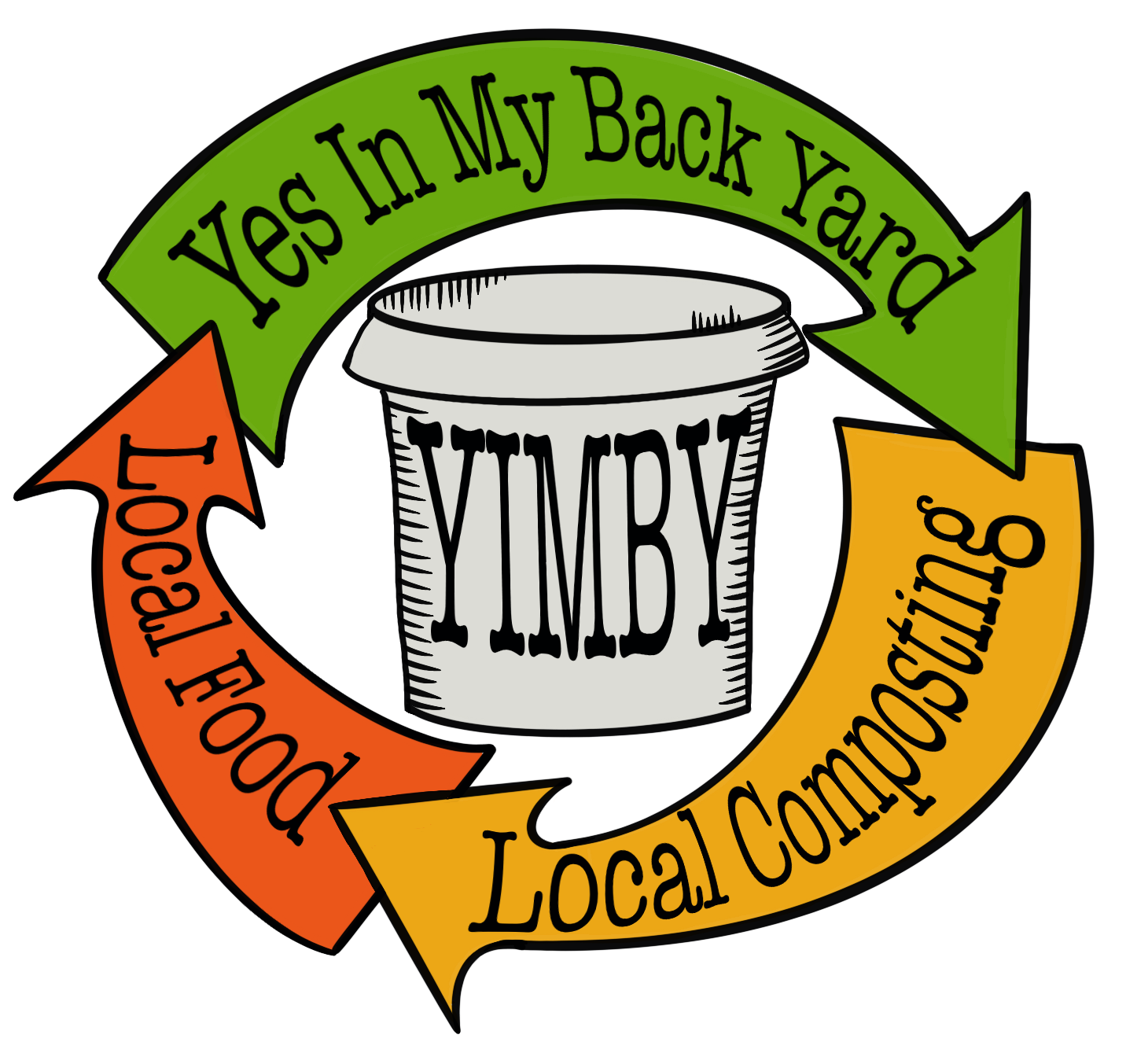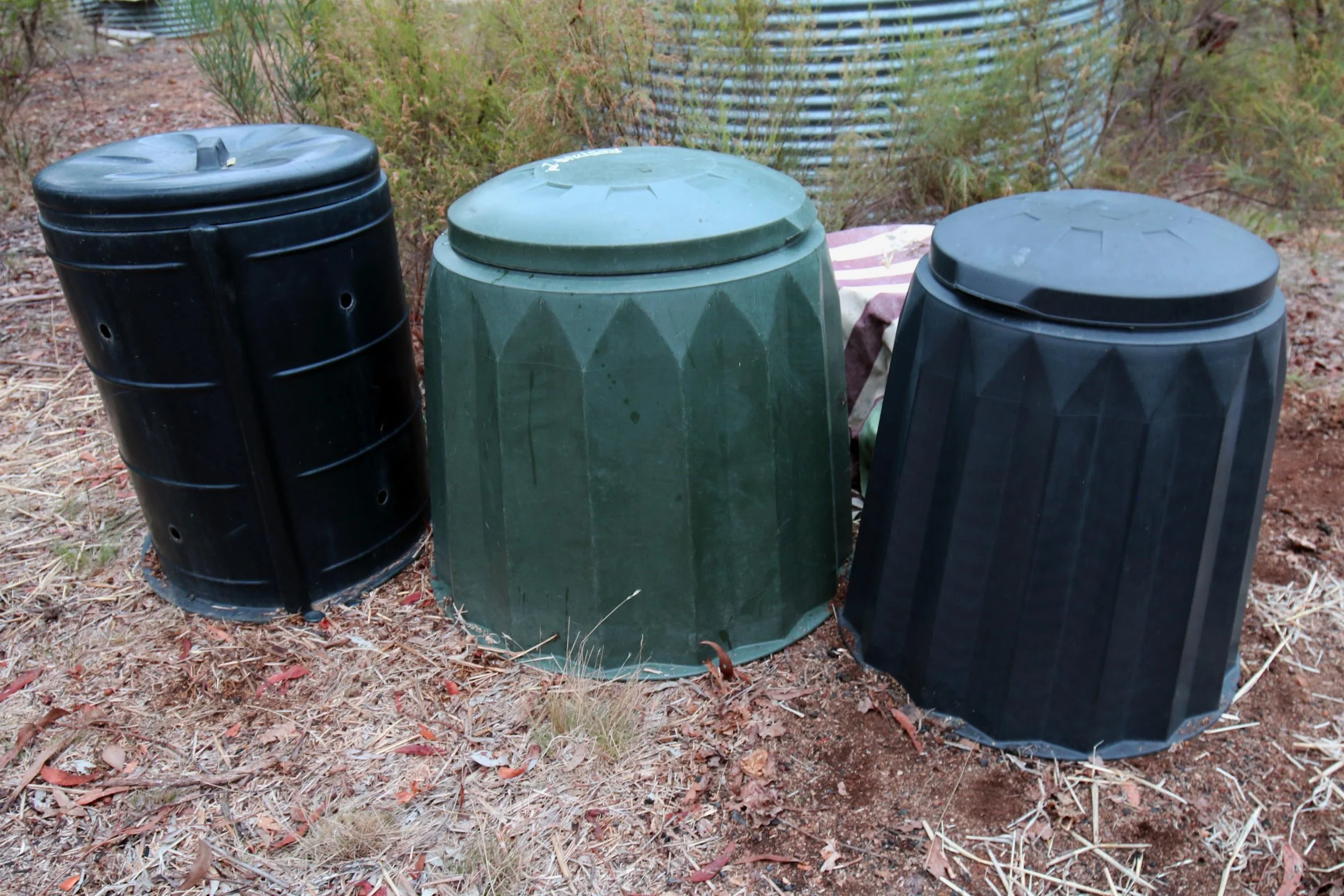May the best bin win
There is a pretty dizzying choice of compost bins available for sale, so what should we consider when looking for the perfect bin?
Compost bins (as opposed to bays) are only designed for ‘cool composting’ in. You can see our article “Is your cool compost…Cool?” on the YIMBY website for our cool compost tips. We may still get some nice heat in our ‘cool’ pile from the active microbes, and the compost may well ‘steam’ a bit on a cold morning, but this will not be hot enough (minimum 55 degrees for 3 days) to reliably kill weed seeds and pathogens, so we need to be careful with what we put in our cool bins.
Contrary to what manufacturers would have us believe, the design and build of different compost bins will have less impact on the quality of the compost we make than the ingredients that go into our compost.
A good compost recipe - a balance of carbon and nitrogen-rich materials, enough moisture and good natural aeration/density - is what we are looking for in any compost, and will play a far more important role than the type of bin (or bay) we are making it in.
When manufacturers start adding air-vents, complicated hatches for accessing ‘finished’ compost and click or bolt together parts, I start to see all the things that can fail in the future. These ‘extra features’ make for weak spots, becoming access points for flies and rodents and a shorter effective lifespan.
The best bins to look for are the simplest ones, those single piece, heavy molded plastic bins with a well-fitting lid. We refer to them generically as ‘Gedye bins’, but it really doesn’t matter who’s brand name is on the lid. Look for ones made from recycled plastic (or buy second-hand), and we do want them to be UV stable, as they will live outdoors and they need to last.
Bins that have a good heavy lip around the bottom edge allow us to fold a layer of rodent mesh (5mm holes) neatly over the bottom of the bin. If we don’t make a physical barrier like this to keep rodents out, any food scraps we do put in our bin probably won’t be feeding the microbes but much larger and less welcome creatures.
Some people worry that solid sides will not provide enough air movement for the compost (read microbes) to ‘breath’ properly, but really, good aeration comes from the ingredients we make our compost from. If the pile is too heavy and dense it’s time to add some lighter, aerating materials, not holes in the side of the bin, that will just encourage small flies and likely dry our piles out in summer.
Lastly, there is a bit of a misconception that our bin needs to be black and out in the sun to work. The sun does heat up black plastic quite hot, particularly in summer, but not nearly hot enough to heat a whole compost pile right though and make it ‘hot compost’. If the microbes themselves aren’t generating the heat from within the pile, the extra heat from the sun is just going to cause problems, particularly for worms that are often doing lots of the work in a cool pile.
AUTHOR: JOEL MEADOWS
Joel Meadows works with Yes In My Back Yard, (YIMBY), a community-scale composting initiative in Castlemaine and surrounds. Send questions or comments to hello@yimbycompost.com or to book in for a compost workshop.
This was first published in the Midland Express on the 23 April 2024

